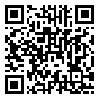Volume 2, Issue 3 (Spring 2011 -- 2011)
BCN 2011, 2(3): 5-11 |
Back to browse issues page
Download citation:
BibTeX | RIS | EndNote | Medlars | ProCite | Reference Manager | RefWorks
Send citation to:



BibTeX | RIS | EndNote | Medlars | ProCite | Reference Manager | RefWorks
Send citation to:
Alam Mehrjerdi Z, Mokri A, Ekhtiari H. Human Laboratory Settings for Assessing Drug Craving Implications for the Evaluation of Treatment Efficacy. BCN 2011; 2 (3) :5-11
URL: http://bcn.iums.ac.ir/article-1-145-en.html
URL: http://bcn.iums.ac.ir/article-1-145-en.html
Abstract:
Research on assessing craving in laboratory settings often involves inducing and then measuring craving in subjects. Cue-induced craving is studied in laboratory settings using the cue reactivity paradigm, in which drug-related photos, videos, evocative scripts, olfactory cues, and paraphernalia may induce craving. Cue-induced craving evoked by drug-related stimuli could be associated with relapse
and recurrence of drug addiction. In this article, the authors review different methods of assessing craving in laboratory settings and explain how human laboratory settings can bridge the gap between randomized clinical trials (RCTs) and animal models on pharmacological treatments for drug dependence. The brief reviewed literature provides strong evidence that laboratory-based studies of craving may improve our understanding of how subjective reports of drug craving are related to objective measures of drug abuse and laboratory settings provide an opportunity to measure the degree to which they co-vary during pharmacological interventions. This issue has important implications inclinical studies.
Type of Study: Original |
Subject:
Cognitive Neuroscience
Received: 2012/01/3 | Published: 2011/04/15
Received: 2012/01/3 | Published: 2011/04/15
| Rights and permissions | |
 |
This work is licensed under a Creative Commons Attribution-NonCommercial 4.0 International License. |





